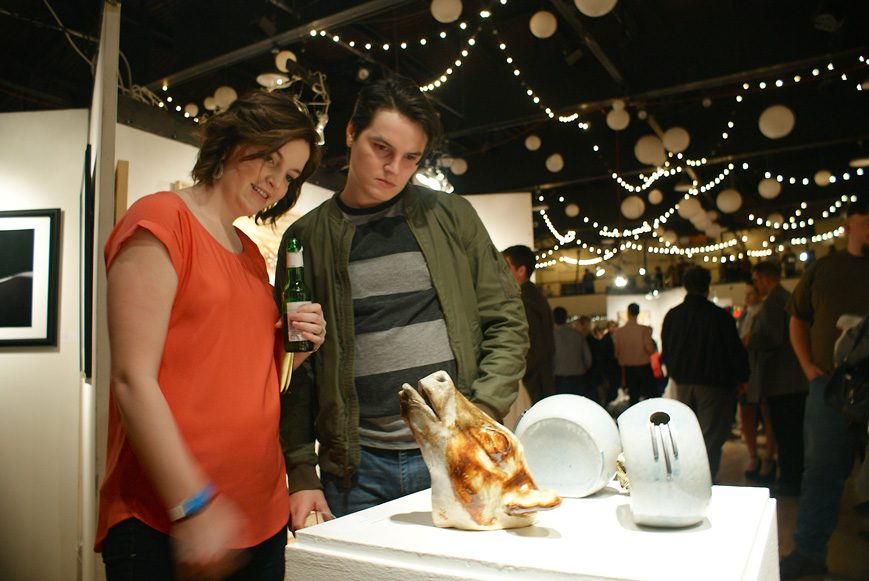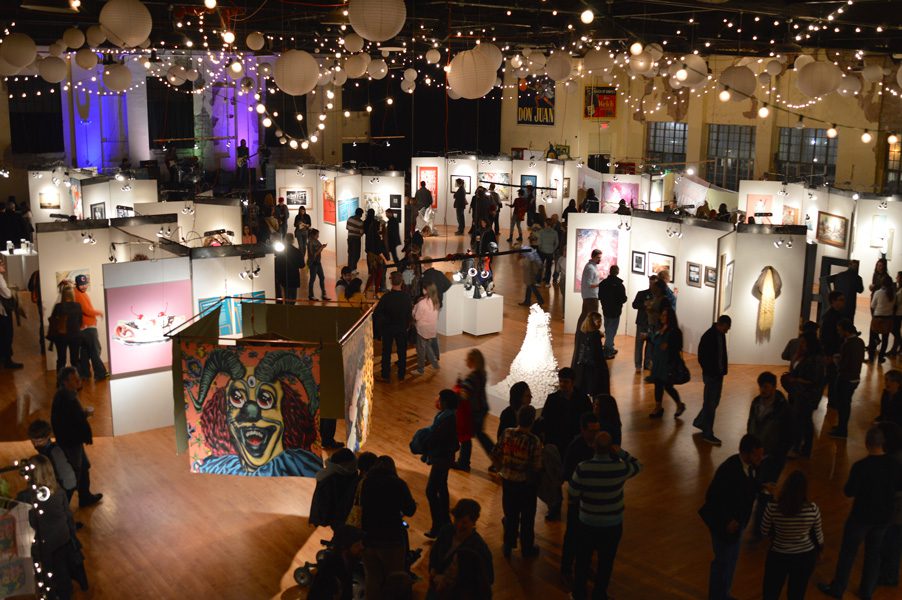
When one encounters a successful and thriving business economy, often not much credit is given to the arts. But, according to Holly Moye, executive director of Oklahoma Visual Arts Coalition, the two are definitely connected.
[pullquote]Oklahoma’s economy ranked as the fourth fastest growing in the U.S. from 2012 to 2013, according to a report published this year by the U.S. Bureau of Economic Analysis.[/pullquote]“Business development is a sign of a healthy community, and the arts are certainly a part of that,” she says. “Where arts and culture thrive, new businesses are more likely to be attracted. Businesses, likewise, are becoming increasingly reliant on the arts. The arts can inspire creative thinking and innovative approaches amongst their employees. And when businesses thrive, they are more likely to give back to their communities, and that often means investing in quality of life, such as the arts.
“There are many examples of this happening here in Oklahoma, like the support from the energy sector in Chesapeake, Devon and Continental Resources, the great investments of the Kaiser family in Tulsa, as well as smaller local businesses like Dunlap Codding in Oklahoma City,” she continues.
Ken Busby, executive director and CEO of the Arts & Humanities Council of Tulsa, agrees.

“[The arts are] extremely important, if you look at arts in a broader context,” he says. “It’s a symbiotic relationship. Businesses are looking for people who are creative and have analytical skills…you have to have a thriving arts scene with visual arts, music, etc., to nourish that group of people that is employed [in the business sector]. It’s a constant back-and-forth, symbiotic relationship. One feeds the other. Economies that thrive feed into an arts scene.”
Oklahoma’s two major metro areas – both Oklahoma City and Tulsa – are currently experiencing booming economies. And with these booms have come flourishing arts scenes. Arts districts have continued to grow, with new pockets popping up. Artists are finding increasing support in the form of expanded arts organizations, new museums and gallery space and affordable studio space.
Busby says that the growing support of the arts is par for the course for this state.
“Oklahoma is a state of creativity,” he says. “We have a spirit of entrepreneurism in the state. I think that this [growth] is recognition of the quality of arts, but we also have a rich art and cultural heritage and vibrancy.
[pullquote]The best city to own a home in Oklahoma, according to NerdWallet, is the Oklahoma City suburb of Piedmont. Tulsa suburbs Jenks and Owasso follow at Nos. 2 and 3.[/pullquote]
“The Brady Arts District is thriving, and the same is true in Bricktown and other creative areas around the state. Using arts as a catalyst, these are where the cool, hip people are hanging out and opening interesting restaurants, shops and boutiques…livable, walkable communities are being built and thriving,” he adds.
Moye says that the booming arts scene right now is the result of work that has been years in the making.
“The state of Oklahoma is experiencing growth in so many areas right now, and the arts are no exception. Many people and organizations have been working for years to build our state’s arts and cultural communities, but recently there has been a real emphasis on working together to make significant and lasting change,” she says. “We are lucky to have an arts community that is supportive of each other, rather than feeling competitive. We also have the relatively recent additions of opportunities for networking amongst artists and arts leaders, such as the Oklahoma Arts Council’s annual statewide arts conference. This kind of convening is so important for working together toward a common goal, and I think the results of this interaction are now coming to fruition.”
Busby says he expects to continue to see growth in existing arts neighborhoods as well as new pockets popping up in both metro areas as well as around the state.
“Obviously, it depends on real estate for Paseo and Brady [arts districts]. It depends on how much land is available, what buildings will be rehabbed,” he says. “What I think will happen is that there will be additional areas developed and pockets will continue to pop up. Someone will pick an area that is neglected and say, ‘Hey, we can start an artist colony here.’ All of a sudden, there’s people hanging out there…all the district will continue to grow, and others will use that as a springboard.”
[pullquote]In September 2014, Oklahoma’s unemployment rate registered at 4.7 percent, a full point lower than the national average of 5.9 percent.[/pullquote]
Moye believes that the continuous growth of business will propel the arts.
“When businesses grow, they have the potential to impact their local communities. In Oklahoma, we are lucky to have many businesses that share their success by giving back, whether that is through funding, promotion, [community] capacity building or other support,” she says. “Each has their own desired outcomes, but a common thread seems to be community improvement and increased quality of life. Arts organizations and artists can respond to these things directly in ways that foster an environment of inclusion and creativity. Together, business and art are building collaborative communities that push the boundaries of possibility.”






















